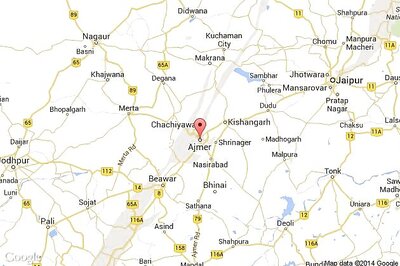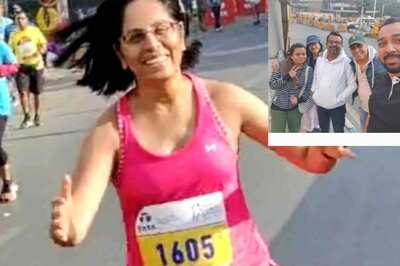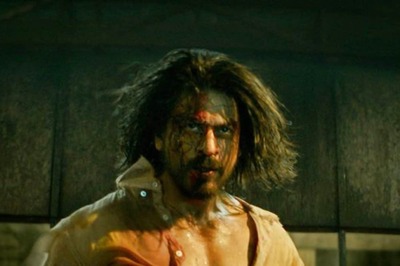
views
“It is hard to decide whether it is judicial statesmanship or judicial cowardice,” remarked advocate Santosh Hegde on a TV channel debate following the landmark SC judgment in the Ayodhya land dispute case.
There is indeed much that is laudable in the observations made by the five-judge bench. “Faith and belief cannot be the basis of a judgment; only evidence can be” is one such. But there is enough evidence that having made several such laudable pronouncements, the verdict defied these and decided in favour of faith and belief.
Indeed, the overall verdict is teeming with gaping holes, such that one could drive a coach through them. We can take only some illustrations here to make the point.
The judgment expresses respect for the discipline of history as practiced by professional historians, which is admirable. But in the next instant, it defies the distinction historians make between historical and mythological figures by handing over the 2.77 acres to Ram Lalla for a permanent abode presumably in deference to the faith and belief of “millions” of Hindus. That the distinction between historical and mythological figures is part of the discipline and does not imply disrespect to the latter has not been even considered.
Perhaps the most crucial evidence relied up by the Court is the report of the ASI, the Archeological Survey of India. That it has overlooked the dispute surrounding the report from the very start is one, lesser aspect; the major issue is the admission that according to the report there were artifacts including some broken idols of a “non-Muslim character” underneath the Babri Masjid but these do not establish the demolition of an in situ or existing temple, Hindu or any other, to make way for the masjid.
The demolition of a Ram temple at the exact site of Lord Ram’s birth to erect the masjid was central to the case of the Hindu side in the dispute. In giving away that piece of land to Ram Lalla, the court has effectively accepted the notion of demolition of a temple and has thus run contrary to evidence of the report which is virtually the keystone of the verdict as well as contrary to its own admission.
There are several instances of inconsistencies between the court’s own observations and the final verdict. That said, the court has tried to deliver a statesmanlike judgment upholding the values of secularism above all. The term occurs 24 times in the verdict and never derisively as is the norm on TV channels and outlandish pronouncements by the current crop of political leaders out to rewrite Indian history of the last 70 years.
It is also very heartening that the stealthy placing of Ram Lalla idols within the precincts of the Babri masjid on the cold dark night of December 22-23, 1949, and the actual demolition of the masjid on December 6, 1992, have been roundly held to be unpardonably illegal.
The award of five acres of land to the Muslim side for constructing a mosque near or at a “prominent” site in Ayodhya also puts paid to the extremist Hindu announcements that construction of no mosque will be allowed within the geographical, if not spiritual limits of Ayodhya as much it takes congnisance of damage done to the Muslims’ rights as citizens of India. A clear act of balancing, with much more compromise with one side than with the other.
Thus, in the end, the honourable Supreme Court has decided that the Babri masjid, or a new version of it, will have to move to another site than the 2.77 acres it had occupied for nearly five centuries.
The judgment unknowingly takes us back to a massive irony buried in recent history. When the dispute began to gather momentum in 1980s, the Hindu side had made an offer to its counterpart: give us the 2.77 acres and we shall move the Babri masjid exactly as it is to another site in Ayodhya which could not be very far from where it stood then.
The technology for moving a whole building from one site to another a short distance away had been tried out successfully in the 1950’s when the Aswan dam was built in Egypt and a very ancient but intact monument was thus moved on a train to another site. The offer was to use the same technology for the Babri masjid.
However, it was refused mainly for the reason that giving in on one site will encourage the militant elements to demand various other sites, especially Mathura and Kashi. That stand could not save the masjid either from the militant, or for that matter moderate elements, not even from the Supreme Court.
It is interesting to speculate on what might have – or, who knows, might not have – happened if that offer had been accepted. If, for example, the Muslim community’s leadership (if it is possible to speak of it in the singular) had responded saying, the historical and archeological evidence does not support the theory of the demolition of a temple, much less a Ram temple upon the land where the Babri masjid came up (as this writer and many historians who have examined the evidence of medieval Indian history have argued), however, in view of the strong sentiment of our Hindu brothers attached to the site in the belief of Lord Ram’s birth here, we are willing to take the offer.
Perhaps one likely outcome might have been the end of the dispute and, the resultant safety of other sites and a storm of goodwill for the minority community, considerably diminishing the atmospherics of a communal conflagration of the kind we have witnessed since 1990-91.
The Muslim community might have been hailed as the real victors upholding the true Indian ethos and most likely the BJP and the Sangh Parivar would not have gained the phenomenal traction, indeed the overwhelming political and even social predominance that we have seen since.
But then history, all history, is full of misjudgments and missed opportunities as much as some grandeur emanating from rare visionaries.
(The author is a historian who taught Medieval History at Jawaharlal Nehru University)




















Comments
0 comment